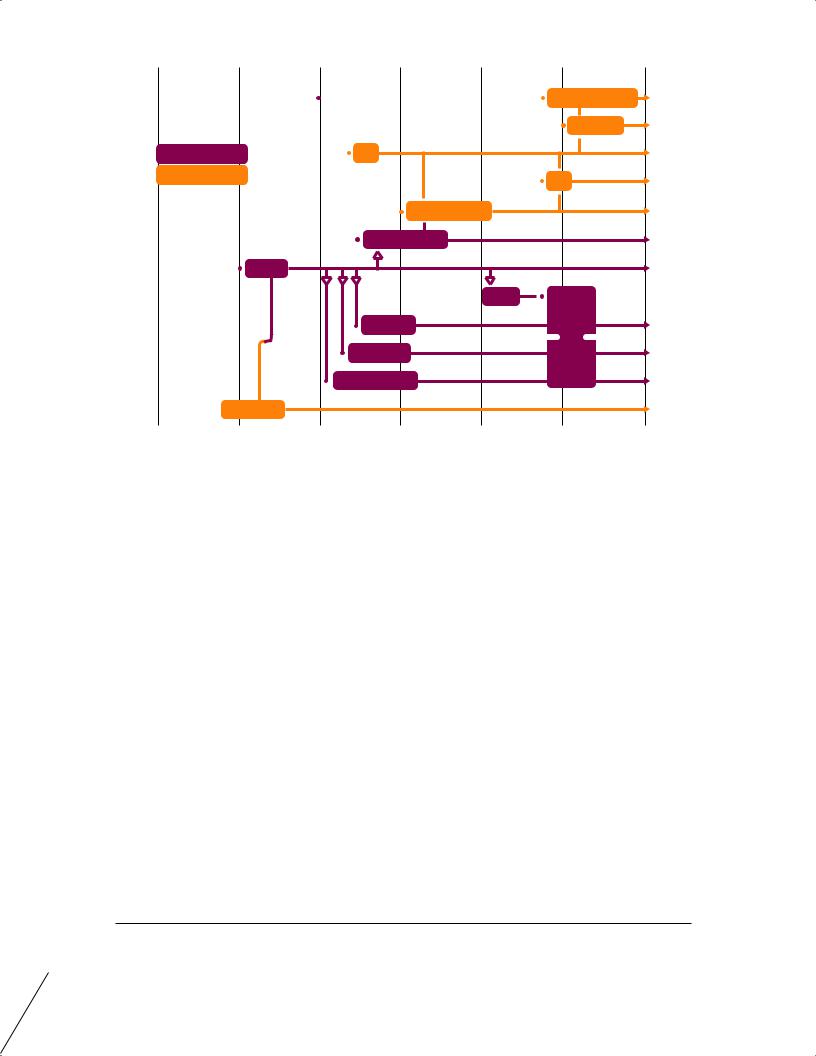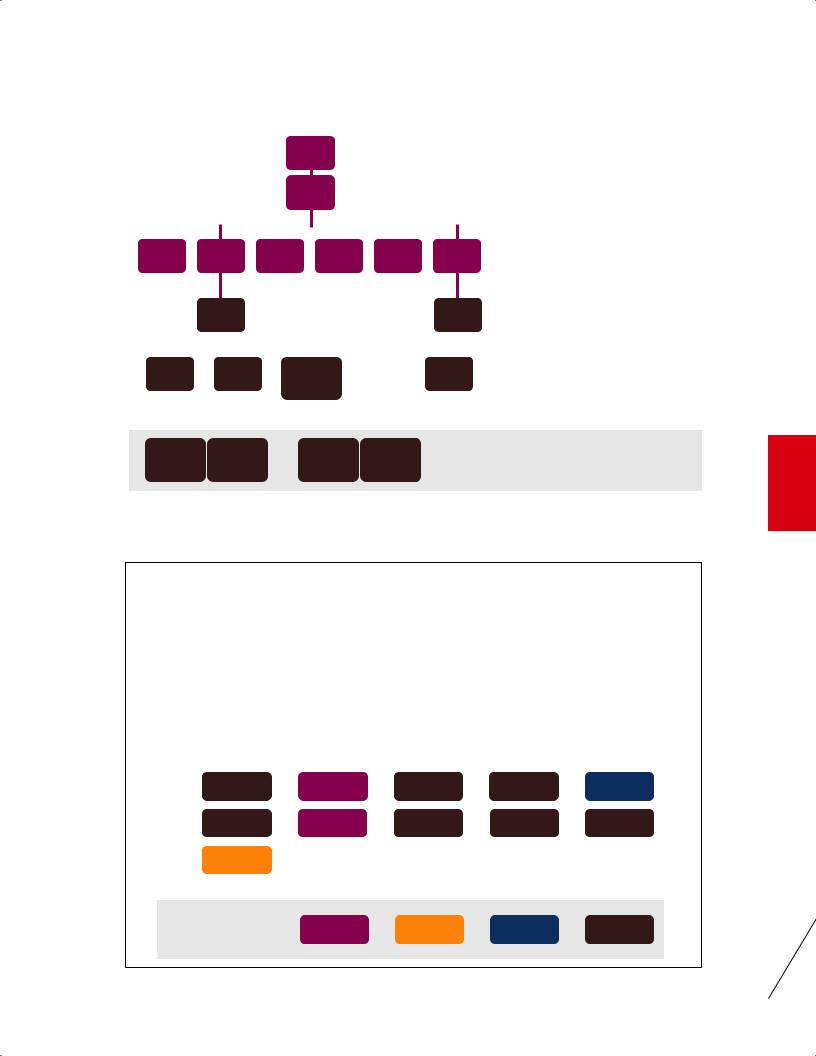
MIT-Skoltech entrepreneurial ecosystems report 2014 _1
.pdf
a department seen as an “outlier” which, for some, only served to highlight how little the new university had by way of “hands-on, technology-driven entrepreneurship”.
•A limited focus on the market for and application of technology: Many interviewees described how “Finland is full of people with fantastic technology knowledge, but we are no good at developing technology for people”. Many told stories about previous generations of Finnish entrepreneurs who travelled to Silicon Valley and “waved their clever technology at the investors with no idea about how it would really be used and were astonished that nobody wanted it. We are just not trained to
think about the market, and nobody does”. As one interviewee commented, “Nokia developed, technologically, the most advanced phone in the world, but no one could use them. We had good engineers but no business skills”.
•A lack of talent, fresh ideas and venture capital: A very small proportion of Finland’s science and technology workforce, around 1.5%, are non-national. In a country of less than six million, this means that Finland struggles to achieve “the critical mass of new ideas and new people to get the investors interested”. In addition, outside key sectors such as ICT, there was seen to be “no venue where all serial entrepreneurs could come together”, to build and strengthen the regional community and attract venture capital. Startups therefore found themselves starved of funds, particularly early stage venture capital. It is perhaps not surprising that venture capital investment in Finland is 18% below the OECD average. As one entrepreneur commented, “Startups in Finland had
two big collapses, in 1991 and in 2011. After that, there were almost no VCs left in the country and very little basis for securing funds... The amount of money is much lower [than in other international entrepreneurial hubs] and this is a major weakness”.
In summary, while the new university benefited from the existing concentration of R&D capacity in Otaniemi and the established departmental links with major Finnish companies, it faced formidable cultural and structural barriers in developing a vibrant ecosystem. The next Section describes how, despite these barriers, an entrepreneurial ecosystem at Aalto has emerged.
A.2 Historical development of E&I at the university
A.2.1 Foundations of the Aalto University ecosystem
As noted above, the area that now represents the immediate Aalto University ecosystem was one that had benefited from many decades of R&D investment and a regional commitment to nurturing a startup culture. However, over the last five years, the ecosystem has been supported directly by a serendipitous combination of factors. The government-led creation of a new national university with a mission to foster world-class E&I coincided with the emergence of an entrepreneurial student-led movement. Both factors appear to be critical to the early development of the ecosystem and are considered in turn.
During the early 2000s, those leading Finland’s universities had become increasingly vocal in their calls for greater autonomy, to move away from a model where “university budgets were just state budgets and university presidents were just civil servants”. At the same time, Finnish industrialists were expressing concern that the national higher education system and, in consequence, the country’s graduates, were not globally competitive. As a result, the government instituted wide-ranging changes in the Finnish university system, including combining the country’s 20 specialist universities into 14 larger institutions.
The merger of the three universities that became Aalto University was one of the major outcomes of this process. Designed to be the flagship national university, it embodied important elements
APPENDIX A AALTO UNIVERSITY CASE STUDY
51

leaders world emerging from evidence :ecosystems entrepreneurial based-university creating
52
of a new approach to Finnish higher education. It was explicitly to be “the innovation university” with its combination of engineering, business and design seen as “the perfect recipe for technology commercialisation”. The government agreed to back industrial support for the new university,
guaranteeing industrial sponsors that, “for every Euro you commit, we will back it with €2.5”. The €200m target for industry funding was raised shortly before the financial crisis in 2008; a target matched by a further €500m from the government. The total investment of €700m plus the real estate made available for the university site was acknowledged to be, “a massive investment for a country of this size”. The board of the new university was also to be exclusively external.
Expectations for the new institution were high amongst staff, students and the wider community –
“Everyone was waiting to see what would happen. Would it really be a place for entrepreneurship?”. The challenges facing Nokia added to these expectations: “There was a growing public debate about whether the country should be so dependent on the success of one company….but people said, if we can’t work at Nokia, where are we going to work? Who will start the other companies that will continue?”.
The interviewees were clear that it was students who were the first to realise the potential of the ‘innovation university’. There was agreement too that the student community adopted a distinctive model of grassroots entrepreneurship, a model explicitly designed as a protest against what was perceived to be the three universities’ overriding focus on “catering to big business”. As one interviewee observed, “the customers of the university were the first people to ‘get it’. The change was very dramatic in a short period of time”. This dramatic change was facilitated by the appointment of the new President of Aalto University in April 2009, nine months before the university was officially launched. She noted that, “almost my first day at work as President, the students presented their ideas to me” about developing student-led entrepreneurship at the new university. In the months that followed, the leaders of the emerging student group spent time with the new President discussing their vision and lobbying for support. An understanding of mutual respect and trust was built between students and the university’s senior managers, which helped to align the university’s innovation identity with regional high-growth technology-based startups rather than, “ideas of innovation that take place within big companies”. While seen as integral to the success of the Aalto ecosystem, interviewees acknowledged that such access
to senior management would be unlikely in an established institution, particularly for a student group whose membership was still relatively small.
The creation of a new university played a practical role, too, in supporting student entrepreneurship. The Otaniemi campus site, which previously housed the Helsinki University of Technology, was to be expanded to accommodate the two additional universities. During the period of transition, there had been significant “spare capacity” on the campus which allowed “new ideas and groups to set themselves up very quickly without much negotiation”. In one example, the student group took up residence, without formal approval, in an old campus warehouse, which later became home to two key student-led activities: the Aalto Entrepreneurship Society (AaltoES)19 and Startup Sauna.20 By acquiring this space, the group ,“suddenly demonstrated their presence in square metres on campus”. It also allowed them to capitalise very quickly on the momentum of the growing entrepreneurship movement and create a space to host and welcome this community.
As reflected in their “occupation” of university buildings, the emerging student movement was overtly counterculture, with a guiding philosophy to “ask for forgiveness rather than seek permission”. Its formation was seeded when a small group of Masters students from the Helsinki School of Economics
19AaltoES, http://aaltoes.com
20Startup Sauna, http://startupsauna.com

(which later became the School of Economics within Aalto) visited the United States to study the student entrepreneurship societies. The experience left them deeply frustrated with the lack of entrepreneurial activity at their home university and the perceived prevailing culture that “universities were just a production line to cater for the big companies”. As one of the founding members commented, “We were angry. We wanted something different, something co-international, something technology-driven and something really ambitious. We were like a startup”. This rebellious determination to create something new was recognised by the university senior management at an early stage: “We happened to have active students who feared nothing – they were interested in doing rather than talking, talking, talking”. Drawing on their experiences in the US, the early student leaders also recognised that, while representing a significant concentration of E&I capacity for Finland, the entrepreneurial capacity of the Aalto region was insufficient to create a startup community that would attract international investment. From its foundations, therefore, the student-led movement developed a strategy which looked well beyond the university, seeking to establish Finland as, “the startup hub of Europe and Russia by 2017”. Within a month of their return, in December 2008, AaltoES hosted its first startup event in which 200 students, entrepreneurs and investors participated.
A.2.2 Time-line for the ecosystem development (October 2008 to date)
Following the formation of the roots of the entrepreneurial ecosystem (see Section A.2.1), there have been four key stages in its growth to date, as outlined below. The evolution of the central components of the university’s E&I system is illustrated in Figure 15, beginning in late 2008, when the momentum for change began, and running to the time of writing (July 2013).
1.Identity development of the grassroots student entrepreneurship movement (Oct 2008-Oct 2009): AaltoES was formed in late 2009, with support from the recently-established Aalto Design Factory. Within weeks, the student society held its first public event and was engaging with the local startup community and the senior management of the new university. In early 2009, AaltoES started to look more closely at its goals and approach. They sought advice from regional serial entrepreneurs and identified three key barriers to the establishment of startups within the Helsinki region; the low engagement with entrepreneurship in the Finnish culture, the lack of startup “know-how” and the lack of international ambition for startup businesses. AaltoES developed a strategy which looked well beyond the university, focusing on high-growth entrepreneurship across Russia and Northern Europe. In March 2009, AaltoES secured the Aalto University President as an advisor to their activities. At this point, AaltoES was operating on a relatively small budget of €35k per year, provided by the university.
2.The rapid growth of student-led entrepreneurship activities (Oct 2009-Dec 2010): Following visits and meetings with AaltoES from late 2009, the Stanford Technology Ventures Program21 (STVP) signed a partnership agreement with Aalto University in late 2010, to support the development of their entrepreneurial capacity. These discussions also catalysed the formation of the Aalto Centre for Entrepreneurship (ACE),22 in May 2010. From this point, the student society significantly expanded the scope and scale of its activities. In 2010 alone, these included the establishment of an accelerator programme and a startup internship, together with over 50 events, such as
the International Day for Failure23 on 13th October 2010, to embrace and learn from failure as an important part of the entrepreneurial process. By mid-2010 AaltoES had received €500k in funding and had a membership of 5000.
21Stanford Technology Ventures Program, http://stvp.stanford.edu
22Stanford Technology Ventures Program, http://stvp.stanford.edu
23International Day for Failure, http://dayforfailure.com
APPENDIX A AALTO UNIVERSITY CASE STUDY
53

leaders world emerging from evidence :ecosystems entrepreneurial based-university creating
54
|
|
|
|
|
|
|
|
Aalto University formed |
|
Open Innovation House |
|
|
|
|
|
|
App Campus |
Key |
|
|
|
|
|
Student Led Activity |
|
ACE |
|
|
|
University Led Activity |
|
|
|
|
AVP |
|
|
|
|
|
|
|
|
|
Stanford Aalto Project |
|
|
|
|
Summer of Start Ups |
|
|
|
|
Aalto ES |
|
|
|
|
|
|
|
|
SLUSH |
Start Up |
|
|
|
|
|
|
|
|
|
|
|
Sauna |
|
|
Start Up Life |
|
|
|
|
|
Start Up Sauna |
|
|
Start Up |
|
|
|
|
|
Sauna |
|
|
|
|
|
Foundation |
|
|
Aalto Venture Garage |
|
|
|
Design Factory |
|
|
|
|
|
Figure 15. Timeline for the development of the university E&I components, 2008–2013, showing student-led activities in purple and university-led activities in orange.
3.Growing external profile and engagement with student-led activities ( Jan 2011-present): By early 2011, the student-led activities were attracting increasing external and media attention. For example in February 2011, AaltoES organised and hosted a week-long visit from Steve Blank,24 incorporating a range of events and activities. The growing national and international media interest in the Aalto ecosystem has also been supported by impressive success stories from previous generations of graduates, particularly from the ICT sector. In early 2012, AaltoES took over the management of a national startup conference (SLUSH),25 and quickly transformed this into a major regional event, drawing participants from across Northern Europe and Russia. In late 2012, many of the established startup activities organised by AaltoES were formally separated from the society and brought together under a new independent organisation called the Startup Sauna Foundation.
4.The development of an E&I support infrastructure within the university (late 2012-present):
Following the establishment of ACE and the Stanford University STVP partnership, the universityled entrepreneurship activities have developed more rapidly from late 2012 on. An increasing number of university faculty have started to engage with both startup activities and E&I support activities. As part of the STVP partnership, the Aalto Ventures Program (AVP)26 was established in 2012, which soon offered a suite of entrepreneurship courses to students across campus. Activity is underway to develop an entrepreneurship research portfolio under the AVP, and, in 2013, two Growth Entrepreneurship Professorships were appointed within the School of Science. Reflecting the student-led movement, university-based E&I activities have focused on the regional highgrowth entrepreneurial capacity and environment. For example, in 2013, the university established AppCampus,29 a mobile application accelerator open to applicants from across the world.
24Steve Blank week, http://steveblank.fi
25SLUSH conference, http://www.slush.fi
26Aalto Venture Program, http://avp.aalto.fi/en/
29 AppCampus, http://www.appcampus.fi

A.3 University approach to entrepreneurship
A.3.1 University E&I strategy and IP policy
University E&I strategy: As noted in Section A.2, the university’s senior management has been a vocal supporter of the entrepreneurship movement at Aalto from the earliest stages of its formation. It has done so without an explicit university policy on entrepreneurship. Nonetheless, interviewees agreed that the philosophy underpinning the university’s support for E&I is clear. It is one that actively nurtures the regional entrepreneurial ecosystem –“trying to build the ecosystem around the university rather than inside the university” by supporting startup activity regardless of whether it is directly affiliated or credited to the university. As this suggests, income generation for the university has been, and remains, secondary to
capacity building. The university is therefore focused more on supporting regional startups than securing IP and return on investment. The partnership secured with the STVP21 also represents an important element of their E&I approach, through seeking to enact a cultural change within the university by forming networks and collaborations outside the institution.
This facilitative approach also underpins the strategy of the university-based technology transfer office Aalto Entrepreneurship Centre (ACE). It works to identify and support spin-offs with the potential to grow into new business around Aalto. Licensing is therefore given low priority. ACE focuses on long-term support and is highly selective about the startup ideas taken forward, with patents only issued where “we see the real business potential”. This relatively tight filter for providing startup support is reflected in ACE’s financial support model. Of the 300 invention disclosures received annually, around 250 are provided with €5k evaluation grants. Of this group, the 50 demonstrating the highest potential are provided with a €50k concept development grant. Finally, around ten projects are provided with a validation grant of up to €300k to, “secure market validation for the commercialisation project”. In line with Finnish policy, faculty-generated IP at Aalto is owned by the university. However, where ACE does not take a project forward (which is the case for 95% of invention disclosures), the IP rights are given back to the inventor. In the case of industrially-funded research, IP is owned by the university until the project completion, at which point it is assigned to the sponsoring company.
In addition to its focus on regional startups in favour of licences and limited patenting, ACE can be distinguished from conventional university technology transfer functions in a number of other ways. These distinguishing features reflect its overarching goal of improving and populating the regional startup environment. For example, ACE offers an identical service to university staff and student entrepreneurs. In addition, it provides extended support for startups emerging from the university, for example by taking startup companies through the first funding round so that, “when we let them go, they are fully funded. We take them to the VCs, help them with their pitch”.
A.3.2 University E&I infrastructure
The Aalto ecosystem architecture comprises three key elements, as outlined below. Further details of the university-based E&I components are given in Table 2.
1.The student-led activities: These cluster around two organisations. The first is AaltoES,19 a student-led society which is highly experimental and organises a wide range of activities and events each year, such as ‘Aalto on Tracks’, which took a group of 100 budding young entrepreneurs from the Aalto community on “an entrepreneurial journey” from Helsinki to Shanghai on a private train. AaltoES
is wholly student-run and its board and leadership change each year. The second element, Startup Sauna Foundation,20 takes successful activities from AaltoES and embeds them in a stable structure
APPENDIX A AALTO UNIVERSITY CASE STUDY
55

leaders world emerging from evidence :ecosystems entrepreneurial based-university creating
56
and funding stream. It consists of an internship programme (Startup Life)27 placing students in highgrowth startups in Helsinki and Silicon Valley, an accelerator programme (Startup Sauna)28 for early stage startups in Russia and Northern Europe, and the annual SLUSH25 conference, which is now the largest startup event in Northern Europe. The Startup Sauna Foundation is an independently-funded organisation managed by a board of serial entrepreneurs.
2.The university-led activities: Since Aalto University was established in 2010, the number of universityled E&I activities has increased significantly. All are managed by or have a strong affiliation with the ACE.22 Most E&I activities within Aalto University reside outside the formal departmental structure, in support functions or industry-supported facilities, with a strong focus on developing regional startup capacity. One recent example is AppCampus,29 a mobile application accelerator programme funded by Nokia and Microsoft. The university offers a suite of entrepreneurship courses to its undergraduate and postgraduate populations, through the Design Factory30 and the AVP.26
3.External community: In addition to its long-standing research and innovation partnerships with key multinational companies such as Nokia, the primary external players supporting the Aalto ecosystem can be considered in two components. The first comprises the community of ecosystem practitioners, principally serial entrepreneurs, government funding agencies and investors, who are located (or were formerly located) within the Helsinki area. In addition to active participation
in community events and activities, this group have played a critical role as advisors, mentors and coaches to many of the E&I activities within and affiliated to the university. The second component is Aalto’s international university partnerships, primarily its collaboration with the STVP.21 This threeyear partnership, established in 2011, facilitates student and faculty exchanges between Aalto and Stanford University and provides support for the growth of E&I activities within the university. Aalto University has also established a number of other international university partnerships to support and inform the development of other entrepreneurial ecosystems, such as with Kaunas University of Technology in Lithuania, as well as helping to seed student entrepreneurship societies at other Finnish universities.
Figure 16 focuses on the first two elements and indicates where these activities (shown in brown) reside in relation to the university structure (shown in purple). Figure 17 indicates the role these activities play in supporting an individual’s entrepreneurial journey, from their initial introduction to entrepreneurship
through to the financing of a new venture. As can be seen from Figure 17, the majority of events and support activities offered are openly available, regardless of nationality or university affiliation.
27Startup Sauna internship program: Startup Life, http://startupsauna.com/internship/
28Startup sauna accelerator programme, http://startupsauna.com/program/
29AppCampus, http://www.appcampus.fi
30Aalto Design Factory, http://www.aaltodesignfactory.fi

|
|
|
|
|
|
Aalto |
|
|
|
|
|
||
|
|
|
|
|
|
Board |
|
|
|
|
University |
||
|
|
|
|
|
|
|
|
|
|
|
|
|
|
|
|
|
|
|
|
Aalto |
|
|
|
|
leadership |
||
|
|
|
|
|
|
|
|
|
|
|
|||
|
|
|
|
|
|
President |
|
|
|
|
|
||
|
|
|
|
|
|
|
|
|
|
|
|
|
|
|
|
|
|
|
|
|
|
|
|
|
|
|
|
|
|
|
|
|
|
|
|
|
|
|
|
|
Core activity |
|
|
|
|
|
|
|
|
|
|
|
|
|
|
Aalto |
Aalto |
Aalto |
|
Aalto |
Aalto |
Aalto |
|||||||
|
within schools |
||||||||||||
ARTS |
SCI |
BIZ |
|
CHEM |
ELEC |
ENG |
|||||||
|
|
||||||||||||
|
|
|
|
|
|
|
|
|
|
|
|
|
|
|
|
|
|
|
|
|
|
|
|
|
|
|
|
|
|
|
|
|
|
|
|
|
|
|
Design |
Optional E&I related |
|
|
|
AVP |
|
|
|
|
|
|
|
activity a liated to |
|||
|
|
|
|
|
|
|
|
|
Factory |
||||
|
|
|
|
|
|
|
|
|
|
|
departments |
||
|
|
|
|
|
|
|
|
|
|
|
|
|
|
|
|
|
|
|
|
|
|
|
|
|
|
|
|
|
|
|
|
|
|
|
|
|
|
|
|
|
|
|
App |
|
ACE |
|
|
Stanford |
|
|
Innovation |
E&I support |
|||
Campus |
|
|
|
|
|
House |
functions and |
||||||
|
|
|
|
partnership |
|
|
|||||||
|
|
|
|
|
|
|
|
|
|
|
|
|
facilities |
|
|
|
|
|
|
|
|
|
|
|
|
|
|
|
StartUp |
|
StartUp |
|
|
|
Aalto |
Summer of |
|
|
Independent |
||
|
|
|
|
|
|
|
student-led |
||||||
|
Sauna |
|
Life |
|
|
|
ES |
StartUps |
|
|
|||
activities
Figure 16. Architecture of Aalto University E&I components (university structure shown in purple, E&I support and education activities in brown).
Primary instruments for entrepreneurial development at Aalto University
|
|
|
|
|
|
|
|
|
|
|
|
|
|
|
- |
|
|
|
|
|
|
|
|
|
|
|
|
and |
|
for |
|
|
|
introduction |
to |
and |
|
teams |
|
|
training |
|
approach |
|
start |
up |
months) |
|
|
space, |
mentorship |
|
new |
|
ups |
|
•nancing |
|
|
support |
investment |
|
|
|
|
|
|
|
|
|
|
|
|
for |
- |
|
|
|
||||||||||||||
|
|
|
|
|
form |
|
|
|
|
|
|
|
working |
|
|
|
|
|
||||||||||||
|
|
|
|
|
|
and |
|
entrepreneurial |
|
( |
|
|
|
|
start |
|
|
|
|
|
||||||||||
|
|
|
entrepreneurship |
opportunities |
to |
|
|
|
|
|
|
Immersive |
|
|
|
|
|
|
support |
|
|
|
|
|
|
|
|
|
|
|
Low |
|
entry |
|
|
Education on |
the |
process |
and |
|
|
|
|
Co |
|
intensive and |
|
|
|
|
Seed |
|
pitch |
|
|
|
|||||
|
|
|
|
|
|
|
experience |
|
|
|
- |
|
|
|
|
|
|
|
|
|
|
|
||||||||
|
|
|
|
|
|
|
|
|
|
|
|
|
|
|
|
|
|
|
|
|
|
|
|
|
|
|
|
|
||
|
- |
|
|
|
|
|
|
|
|
|
|
|
|
|
|
|
|
|
|
|
|
|
|
|
|
|
|
|
|
|
|
Aalto ES events |
|
|
AVP courses |
|
StartUp Life |
|
|
StartUp |
|
|
|
|
|
|
ACE |
|
|||||||||||||
|
|
|
|
|
|
Sauna |
|
|
|
|
|
|
|
|||||||||||||||||
|
|
|
|
|
|
|
|
|
|
|
|
|
|
|
|
|
|
|
|
|
|
|
|
|
|
|
|
|
||
|
|
|
SLUSH |
|
|
|
Design Factory |
Summer of |
|
AppCampus |
|
|
|
|
SLUSH |
|||||||||||||||
|
|
|
|
|
|
Courses |
|
|
StartUps |
|
|
|
|
|
||||||||||||||||
|
|
|
|
|
|
|
|
|
|
|
|
|
|
|
|
|
|
|
|
|
|
|
|
|||||||
Stanford
visit
Key: activity participants
Aalto students |
Aalto faculty |
All Aalto sta |
Anyone |
|
only |
only |
and students |
||
|
Figure 17. The E&I support activities at Aalto along the startup pipeline, from initial engagement with the idea of entrepreneurship to funding a new startup company.
APPENDIX A AALTO UNIVERSITY CASE STUDY
57

leaders world emerging from evidence :ecosystems entrepreneurial based-university creating
Open-access centre providing entrepreneurship support and advice
Aalto Centre for Entrepreneurship |
Established in 2010, ACE supports and coordinates all student and staff E&I activities within Aalto University (excluding the |
(ACE) |
student-led activities, AaltoES and Startup Sauna). With a team of 14, it brings together four key functions: (i) a technology transfer |
|
function, with a “tight filter”, focusing its resources on high-potential startups emerging from Aalto’s staff and student communities, |
|
(ii) startup services, to “take the startups through their first funding round, so that when we let them go, they are fully funded”, (iii) strategic |
|
industry partnerships, with companies such as PWC, to improve “the understanding of market needs for Aalto-based innovations”, |
|
and (iv) support for and oversight of other E&I activities “that don’t have a natural home”, such as AppCampus and Aalto Ventures |
|
Program (see below). |
Entrepreneurship courses offered to students in engineering and technology disciplines
Aalto Ventures Program (AVP) |
Established in 2012, Aalto Ventures Program offers a suite of courses to undergraduate and postgraduate students across campus |
(optional courses) |
tailored for the development of entrepreneurial skills and attitudes. It was developed as part of the Aalto University partnership with |
|
the Stanford Technology Ventures Program (STVP). Of the 20 AVP courses currently available, a number are co-taught by faculty |
|
from Stanford Univesity via remote link. Such courses include Changemakers, Entrepreneurial Leadership and New Venture Formation. |
|
More than 350 students from across Aalto University participated in one or more of the AVP courses offered this year. Students are |
|
also able to study for an entrepreneurship minor through the AVP. |
|
|
Design Factory (optional courses) |
The Design Factory offers a number of hands-on courses with a focus on innovation, available to undergraduate and postgraduate |
|
students across campus. An example includes the interdisciplinary Product Development Project, where students develop a product |
|
from initial ideas though to the creation of a prototype, with a clear focus on its commercial potential. |
Student entrepreneurship clubs and societies |
|
AaltoES |
Established in 2009, AaltoES is a not-for-profit student-run society which describes itself as “the largest and most active student- |
|
|
|
run entrepreneurship society in Europe”. Although AaltoES operates independently of Aalto University, many of its 5000 members |
|
are undergraduate or postgraduate students at Aalto or other Helsinki-based universities. The society, “creates high-tech, high- |
|
growth, scalable entrepreneurship and builds a leading startup ecosystem in Finland and Northern Europe”. Although operating in close |
|
collaboration and being housed in the same building, AaltoES recently separated from the Startup Sauna to allow the society to |
|
continue to adapt and create new ways to support and nurture the entrepreneurial ecosystem. To support this “startup spirit of |
|
invention” and “not caring what people have done before” the (wholly student) leadership and board of AaltoES is replaced annually. |
|
The society organizes around 50 events each year, such as Aalto on Rails and National Day of Failure, and attracts around 10,000 |
|
participants annually. AaltoES also organises the Summer of Startups, a two-month programme to support “first-time startups” |
|
emerging from the populations of students or researchers. |
|
|
Startup Sauna |
Founded in 2010, Startup Sauna is an student-led not-for-profit supporting regional entrepreneurship. Although based on campus, |
|
it no longer has an official affiliation with Alto University since its separation from AaltoES in early 2013. The Startup Sauna |
|
Foundation is managed by a board of serial entrepreneurs, which is renewed every three years. It focuses on the growth of regional |
|
high-growth startups and comprises three key elements: |
|
• The Startup Sauna accelerator programme: a bi-annual seed accelerator for startups in Northern Europe and Russia. It |
|
comprises (i) one-day ‘warm-up’ coaching sessions, held across in 10-20 locations across Northern Europe and Russia, (ii) a |
|
six-week residential accelerator programme for around 40-60 teams per year, as selected during the warm-up sessions. The |
|
teams with the highest potential are given the opportunity to visit Silicon Valley to meet with investors. |
|
• Startup Life: a 3-12 month internship within an established startup in Silicon Valley or Helsinki, open to students, |
|
postgraduates or researchers from any university. Its aim is to “get students out of the university, out of Finland to see what is |
|
possible and how startups really work”. |
|
• SLUSH conference: Startup Sauna assumed management of the SLUSH conference in 2011, which “brings together the |
|
early-stage startup ecosystem in the region to meet top-tier venture capitalists and media from around the world”. Three and a half |
|
thousand people attended the 2013 SLUSH conference including 1000 startups. |
|
The 2013 operational cost for the first two elements above is approximately US$650k in total, which is financed by key Finnish E&I |
|
funding agencies (Teknologiateollisuus, Sitra and Tekes) and other private investors and donors. Early financing for the operation |
|
was covered by Aalto University and Tekes. The operational costs of SLUSH (approximately US$1m) are covered by ticket sales. |
|
|
University accelerator/incubator |
|
Startup Sauna |
(see Startup Sauna accelerator above) |
|
|
App Campus |
Established in 2013, AppCampus is a mobile application accelerator programme offering a one-month residential experience to two |
|
cohorts per year, each of around 100 participants. The accelerator is funded by Nokia and Microsoft, who each contributed US$6m |
|
over a period of three years. In-kind support of US$3m is provided by Aalto University. AppCampus is open to all applicants, |
|
regardless of affiliation, and received 1200 applicants from 92 countries in its most recent call. Only a small minority of the teams |
|
accepted onto the accelerator programme are affiliated to the Aalto University and no IP, revenue share or equity are taken from |
|
any participant. |
|
|
Other |
|
Open Innovation House |
The Open Innovation House was established within the Aalto University campus in early 2013 and offers, “a base and meeting venue |
|
for open innovation and collaboration creation”. It hosts a number of research centres working primarily in the IT sector (such as the |
|
Nokia Research Centre and the European Innovation and Technology IET Labs) space for new startup enterprises as well as a range |
|
of other E&I activities, such as AppCampus. |
|
|
Design Factory |
Established in October 2008, the Design Factory was the first physical entity of the new Aalto University. Modeled on the d.school |
|
at Stanford University, this centre brings the disciplines of engineering, design and business together to “develop and cultivate the |
|
passion-based, student-centric learning culture”. |
|
|
STVP Partnership |
Established in 2010, initially as a three-year agreement, the university’s collaboration with the Stanford Technology Ventures |
|
Partnership (STVP) aims to infuse, “the culture of Silicon Valley” into Aalto University. The key elements of the programme involve: |
|
(i) visits from key Stanford University faculty with expertise in entrepreneurship, (ii) the hosting of week-long visits of Aalto |
|
University students, and senior university management to Stanford University and Silicon Valley, (iii) a platform to host Aalto |
startups in Silicon Valley, (iv) guidance for new Aalto research tracks in entrepreneurship, and (v) support in the design and delivery of the Aalto Ventures Program, including the co-teaching of key undergraduate modules. The majority of the funding that supports the STVP partnership is provided by Tekes.
Table 2. Key E&I components at Aalto University.
58

A.4 Achievements and impact
Some early performance indicators of the Aalto University ecosystem are available. Following the establishment of AaltoES and ACE in 2009 and 2010 respectively, an increasing number of startups have entered the market. For example, around ten startups per year are emerging from ACE, of which approximately half are student-led. In addition, around 90 companies have graduated from the Startup Sauna since 2010, which have, to date, attracted around US$25m in funding. However, it is less than five years since the emergence of a community of entrepreneurial students and only three years since Aalto
University was established. As was widely acknowledged by interviewees, the Aalto ecosystem is at an early stage of development. As one local entrepreneur put it, “the fruits are not yet ripe for picking”. It is therefore too early to apply “more meaningful” metrics of long-term E&I performance such as trends in growth rate in ecosystem employment, or the survival rate of the companies formed.
However, as one Silicon Valley-based entrepreneur commented, the trajectory of the ecosystem “looks promising”. Other interviewees concurred, pointing to a number of ‘soft’ indicators that suggested a vibrant ecosystem was emerging. These focused on (i) evidence of a major cultural shift in young people’s attitudes to entrepreneurship, (ii) high levels of engagement in startup opportunities, and (iii) evidence of increasing levels of inward investment. Each of these issues is discussed below.
Almost every interviewee noted the speed and scale of change in young people’s attitudes, which, for many, was directly attributable to the emergence of the Aalto University ecosystem: “There has been a revolution in attitudes in young people towards entrepreneurship. Before, perhaps 2% might have been interested. Now it
is 20-30%. People don’t want to get a safe job now. Much of this is down to the students [at Aalto]”. Another interviewee commented, “Attitudes to entrepreneurship in Finland are changing. Aalto ES have pushed through a new way of thinking. Finland is a small country and much of the economy is concentrated in Helsinki, so this one student organisation can be very influential”. Many interviewees had had decades of experience with startups in Finland and had watched the cyclical rises and falls in engagement in entrepreneurship. All were clear that the current period was different: “Aalto has generated excitement at the student level that has not died away. Previous waves like this died away quite quickly”. Another Helsinki-based investor commented that, “it is the most significant phenomenon of my career that I have seen, because the change is so sudden. Five years ago, if you were a top student and had all the options in the world, entrepreneurship and startups were at the bottom of the list. If you said ‘I want to start up a business’, the reaction would have been ‘what, you can’t find
a job?’ All of a sudden, amongst these students, entrepreneurship has become a desired career path. Successful entrepreneurs in Finland have become like rock stars. Entrepreneurship became a cool thing”. Most, although not all, interviewees also commented that this cultural transformation, driven by AaltoES, had influenced attitudes across the country.
Almost every interviewee also spoke about the high level of engagement in the entrepreneurship activities sponsored by Aalto; what one stakeholder described as “the phenomenal levels of participation”. For example, among the university’s undergraduate and postgraduate population, it is estimated that one in six are members of AaltoES, with a considerably larger proportion of the university student population participating in one or more of the 50 AaltoES events each year. In addition, many interviewees commented that a very high proportion of the serial entrepreneurs operating within the ecosystem are engaged in some capacity with Aalto University, for example, as a coach, advisor or participant in AaltoES activities. The ecosystem
is also attracting increasing external interest. For example, the SLUSH25 conference in 2010 was attended by an exclusively local audience of around 300-500, with 20-40 local startups represented and almost no media coverage. In contrast, SLUSH attendance in 2013 stood at 5000, with 1000 startups, of which 70% were non-Finnish, and 100 foreign venture capital funds; it was also reported to be the third largest startup conference in Europe. The 2013 SLUSH event also generated 200-300 articles in the international media.
APPENDIX A AALTO UNIVERSITY CASE STUDY
59

leaders world emerging from evidence :ecosystems entrepreneurial based-university creating
60
In all, it is estimated that there were over 40,000 participants at the various startup events and activities at Aalto University in the previous 12 months to July 2013.
There is also evidence of inward investment in the Aalto ecosystem. According to Ari Huczkowski, the CEO of Otaniemi Marketing Ltd, “in the first quarter of 2013, Finland attracted the third highest investment money in Europe, behind only France and the UK. More than 90% of that money was invested within 15 minutes from Otaniemi campus”. In addition, he added that, “the most recent Red Herring 100 Europe winners list had 12 Finnish companies on it. Nine of those are either right inside the Otaniemi campus – or within 15 minutes of it”. Indeed, three of the five fastest-growing Finnish companies in 2012 came out of Aalto University.
While indicative of future performance, it must be acknowledged that the Aalto ecosystem is still in its infancy. Its long-term capacity to nurture successful startups and to contribute to the wider Finnish economy has therefore yet to be demonstrated.
A.5 Success factors
Many of the world’s leading entrepreneurial universities were formed from the convergence of two factors:
(i) being, “in the right place at the right time”, and (ii) the implementation of a strategy, that, consciously or unconsciously, supported entrepreneurial behaviours and attitudes amongst its population. Aalto University is no exception.
Two broad sets of factors have contributed to the successful development of the Aalto ecosystem to date. The first relates to its propitious circumstances and the second to the approach taken by the student and university leaders.
A.5.1 Success factors relating to environment and circumstances
It was clear from the interviews that three contextual factors were critical to the development of the Aalto ecosystem. These are noted briefly in turn.
1. The stimulus of a new university: Many interviewees described the university merger as a “triggering event”; one which “caused collisions” as the different universities were brought together with the aim of fostering cross-disciplinary innovation. There was a strongly-expressed view that, “without the merger, the original three [universities] would have continued as they were for hundred years”.
Aalto University was explicitly designed to break with the Finnish traditional model both in its greater autonomy and its focus on innovation for the good of the wider society. Together, the new model, “made us open up to new ideas – even radical ideas – of how to do things differently”. The significant endowment capital received by the new university also allowed it “to invest in new ideas – be it the student entrepreneurship society or in new tenure track slots – without asking permission from anyone”. Further information of the impact of the merger on helping to nurture the ecosystem development is provided in Section A.2.1.
2. An improved national environment for entrepreneurship: The entrepreneurial environment in Finland changed significantly during the period of Aalto University’s design and establishment.
Firstly, Aalto was able to benefit from ongoing support from the national government for innovation and entrepreneurship. Through its public innovation policy, “the government saw changing the culture as one of the key factors in future growth”. Tekes, in particular, plays a key role in supporting the country’s E&I infrastructure. As one interviewee commented, “in Finland, there is almost no private funding, Tekes
